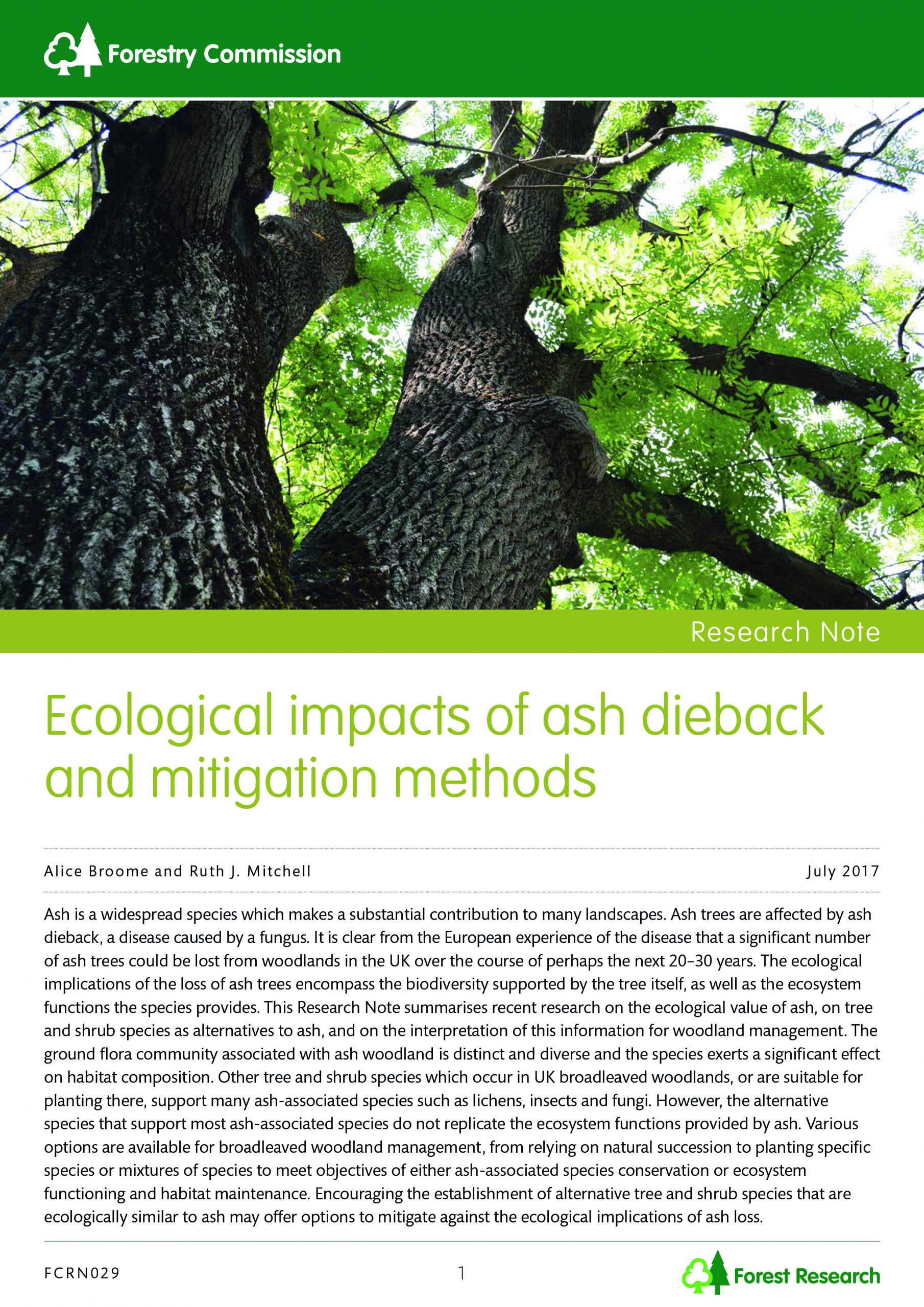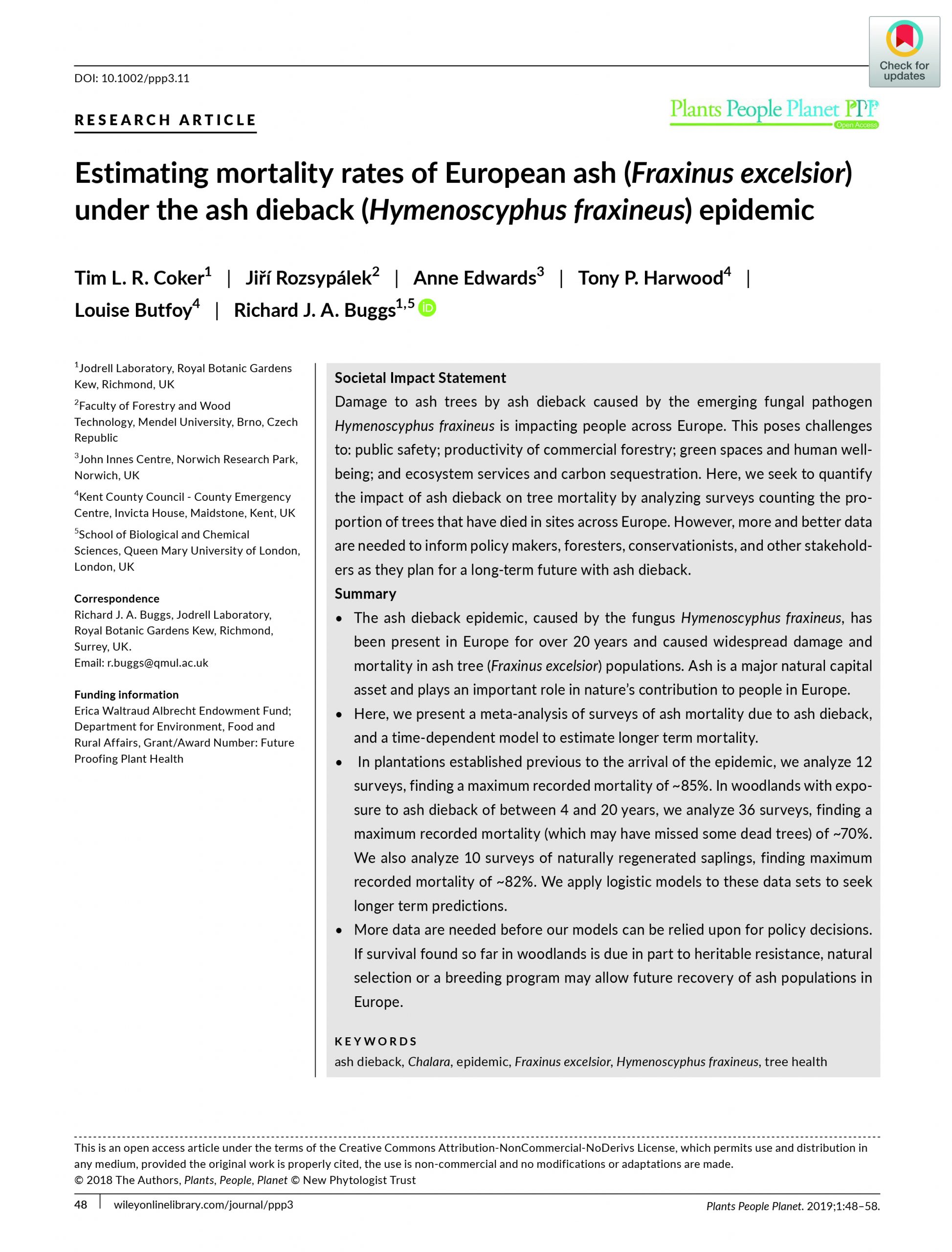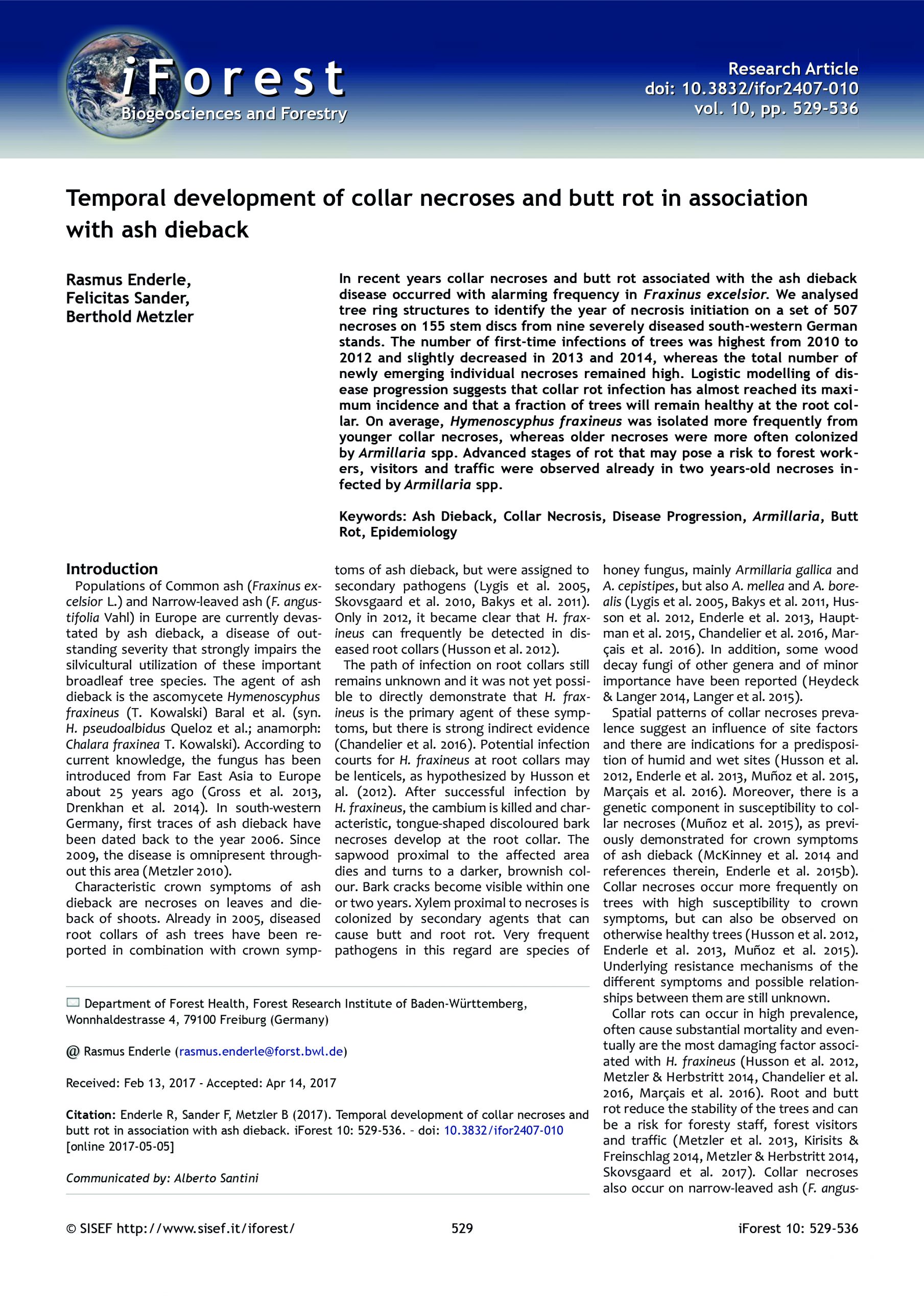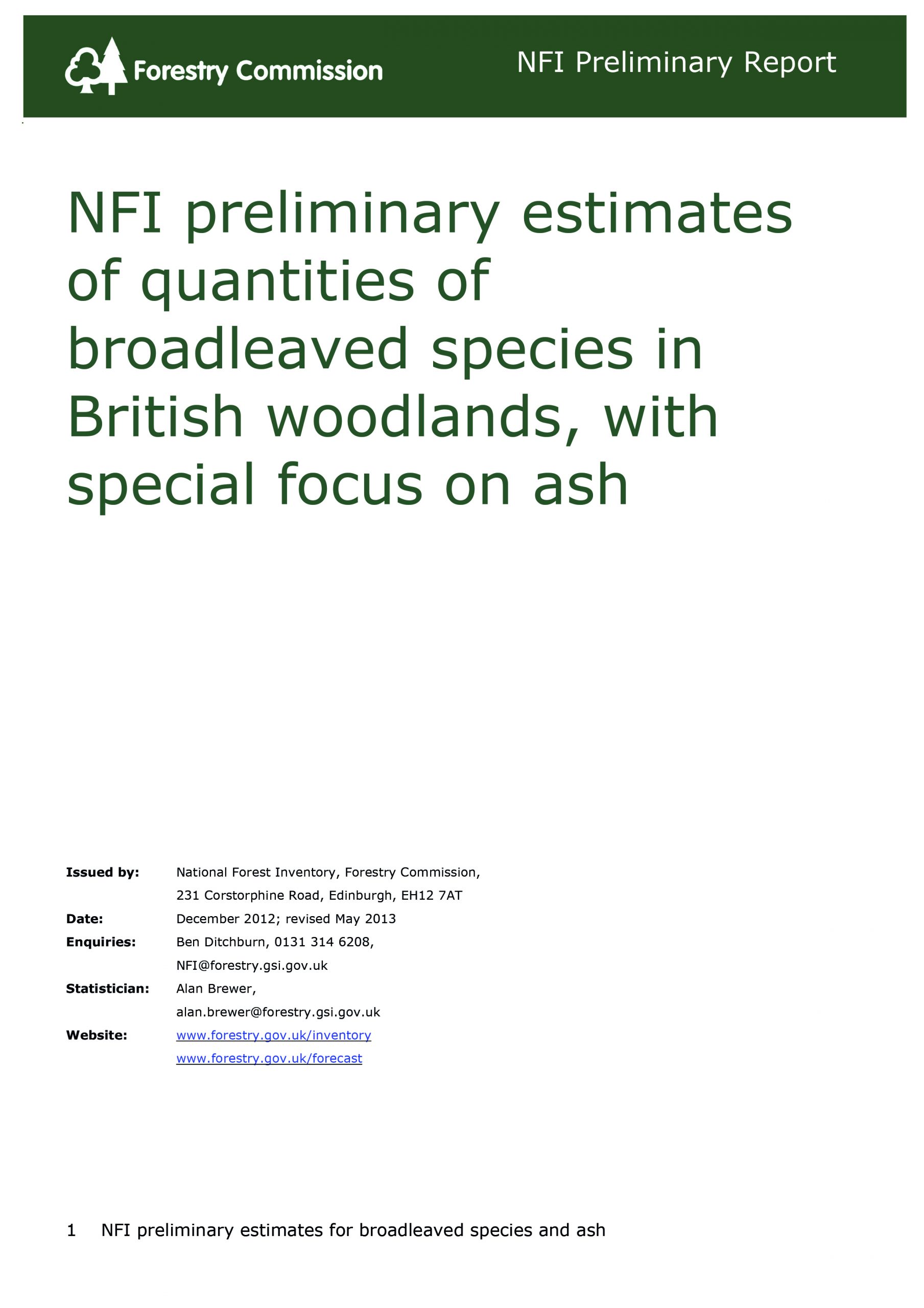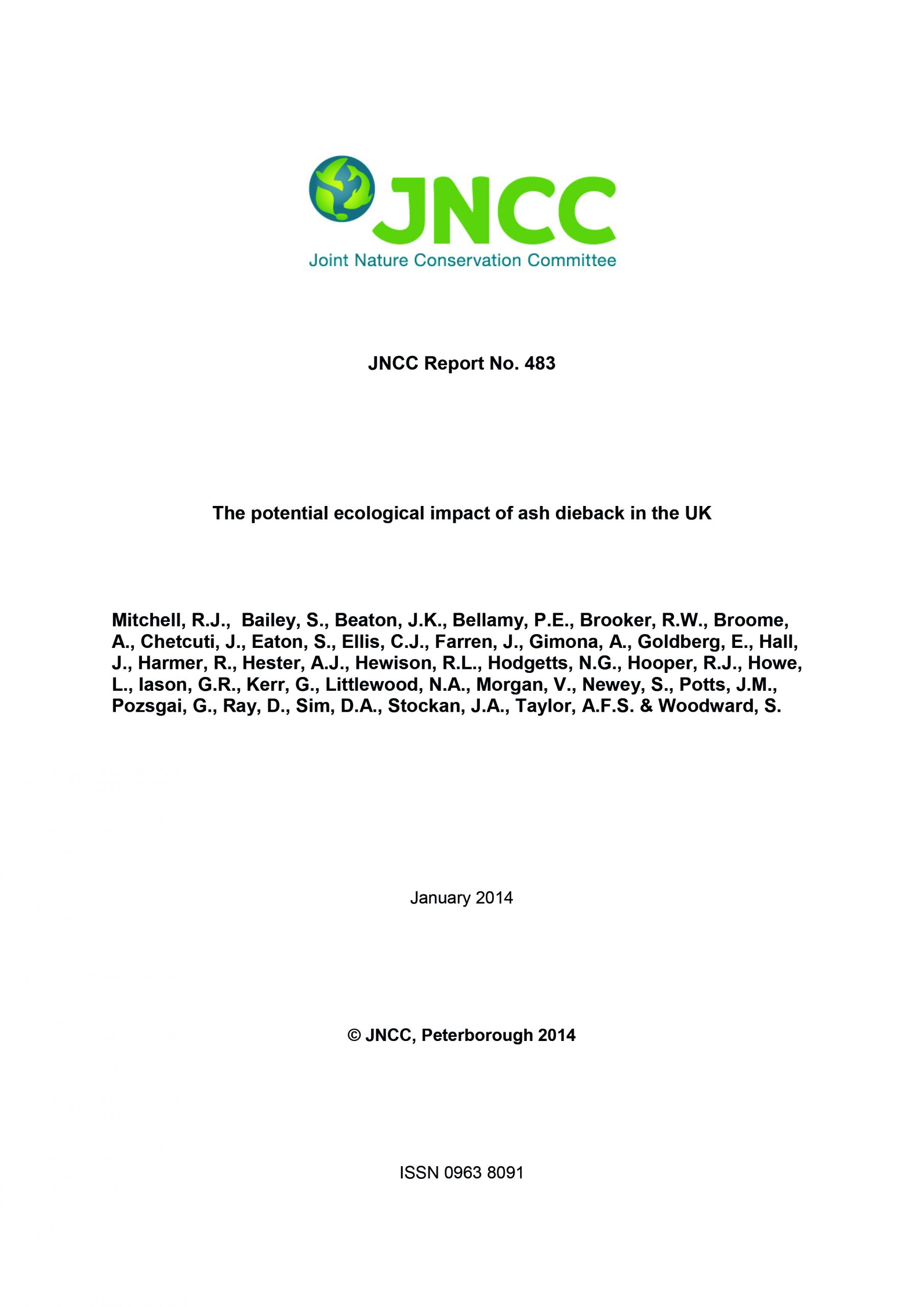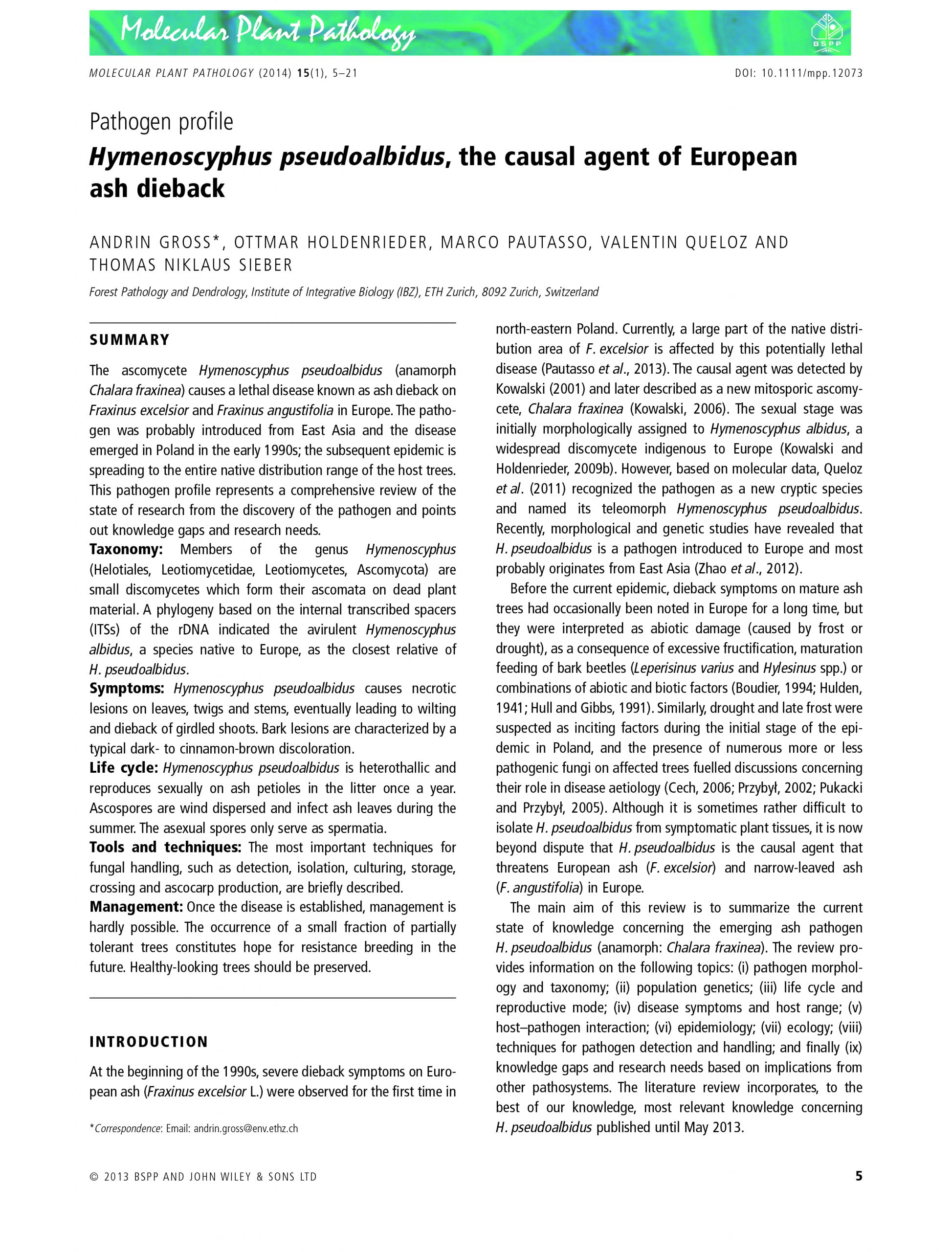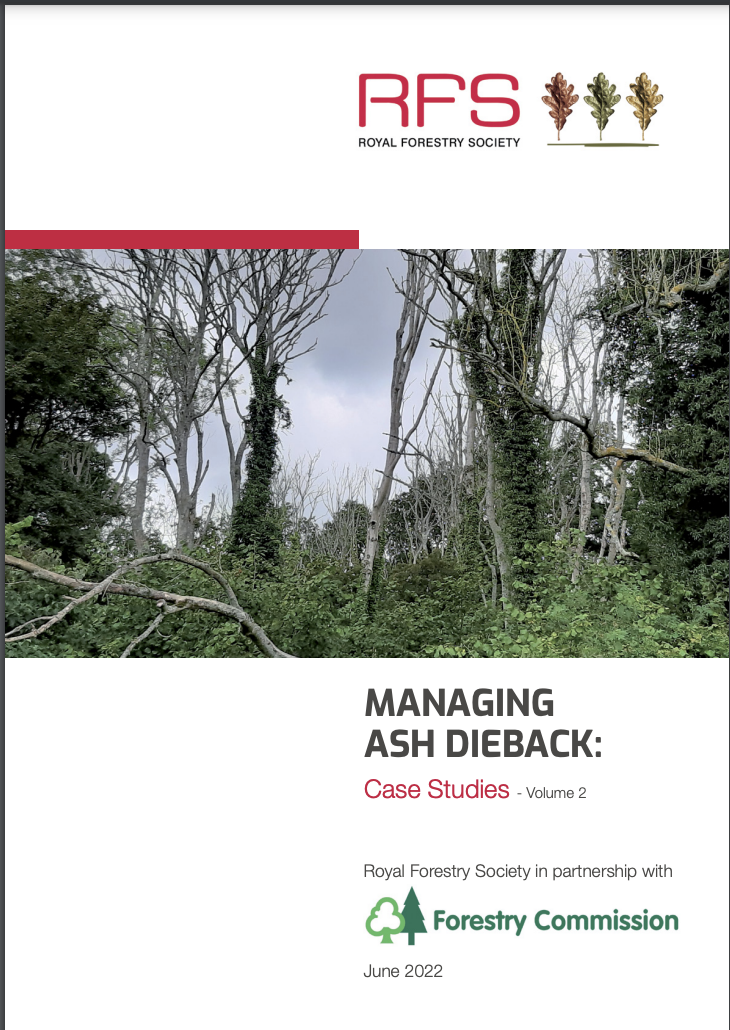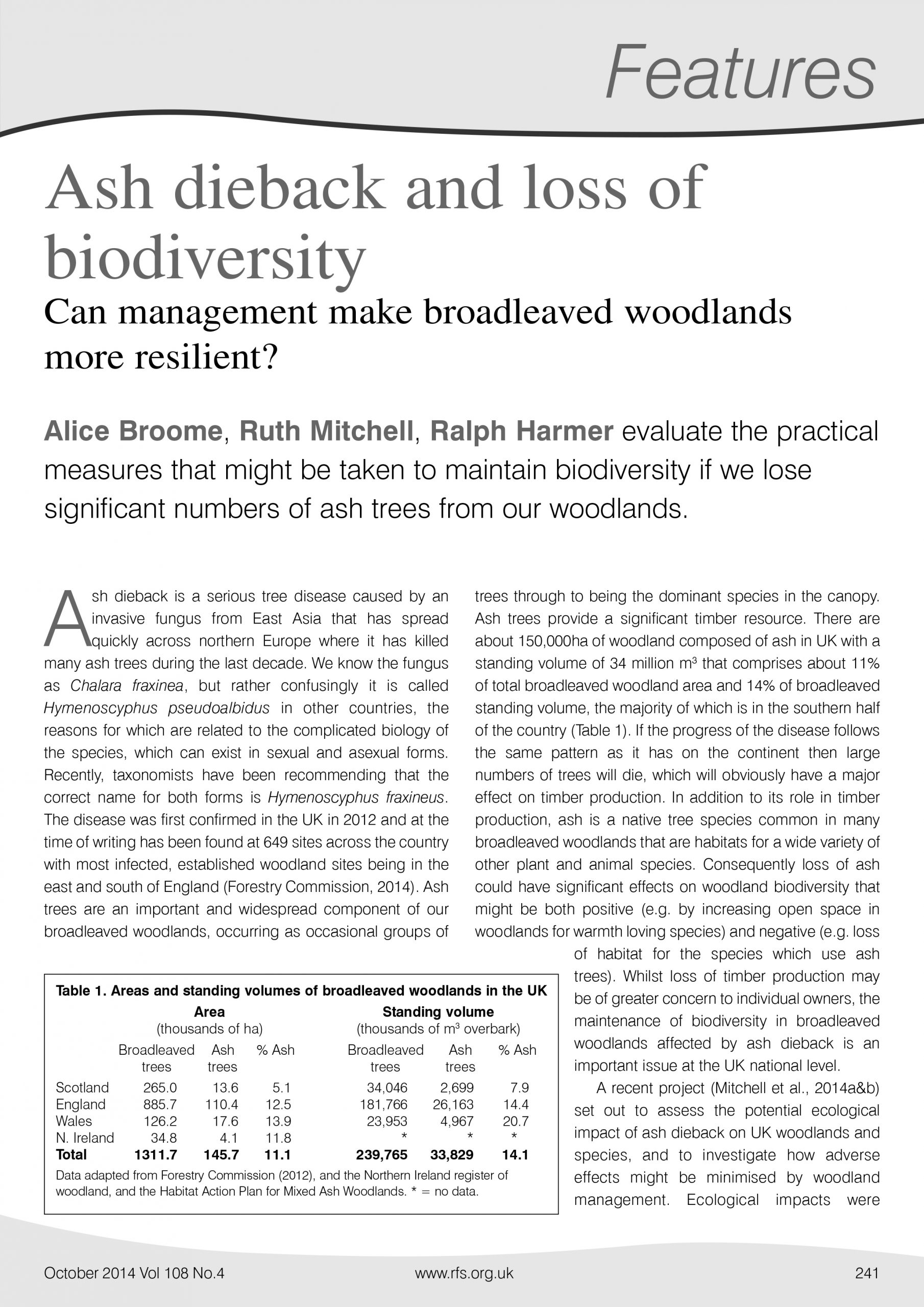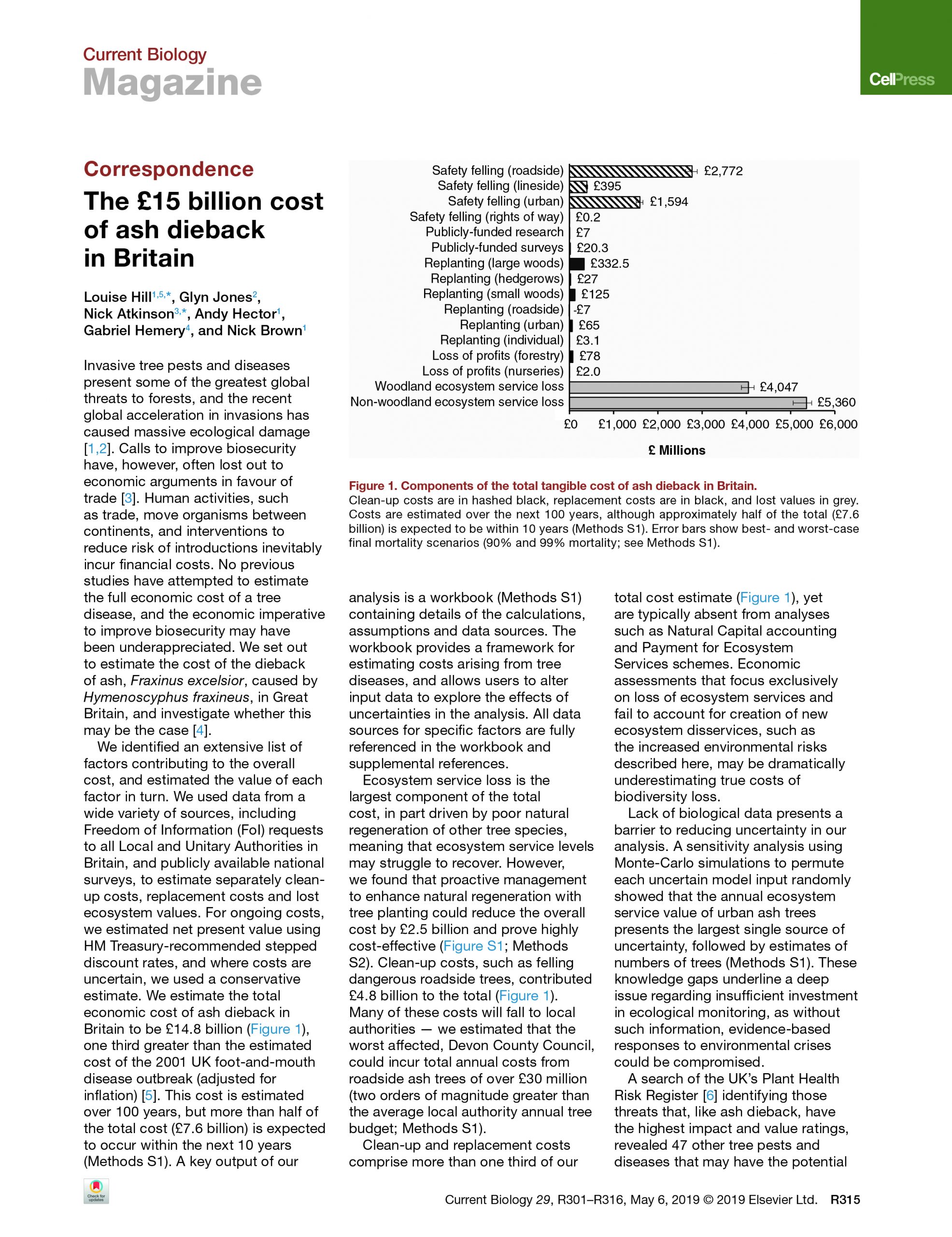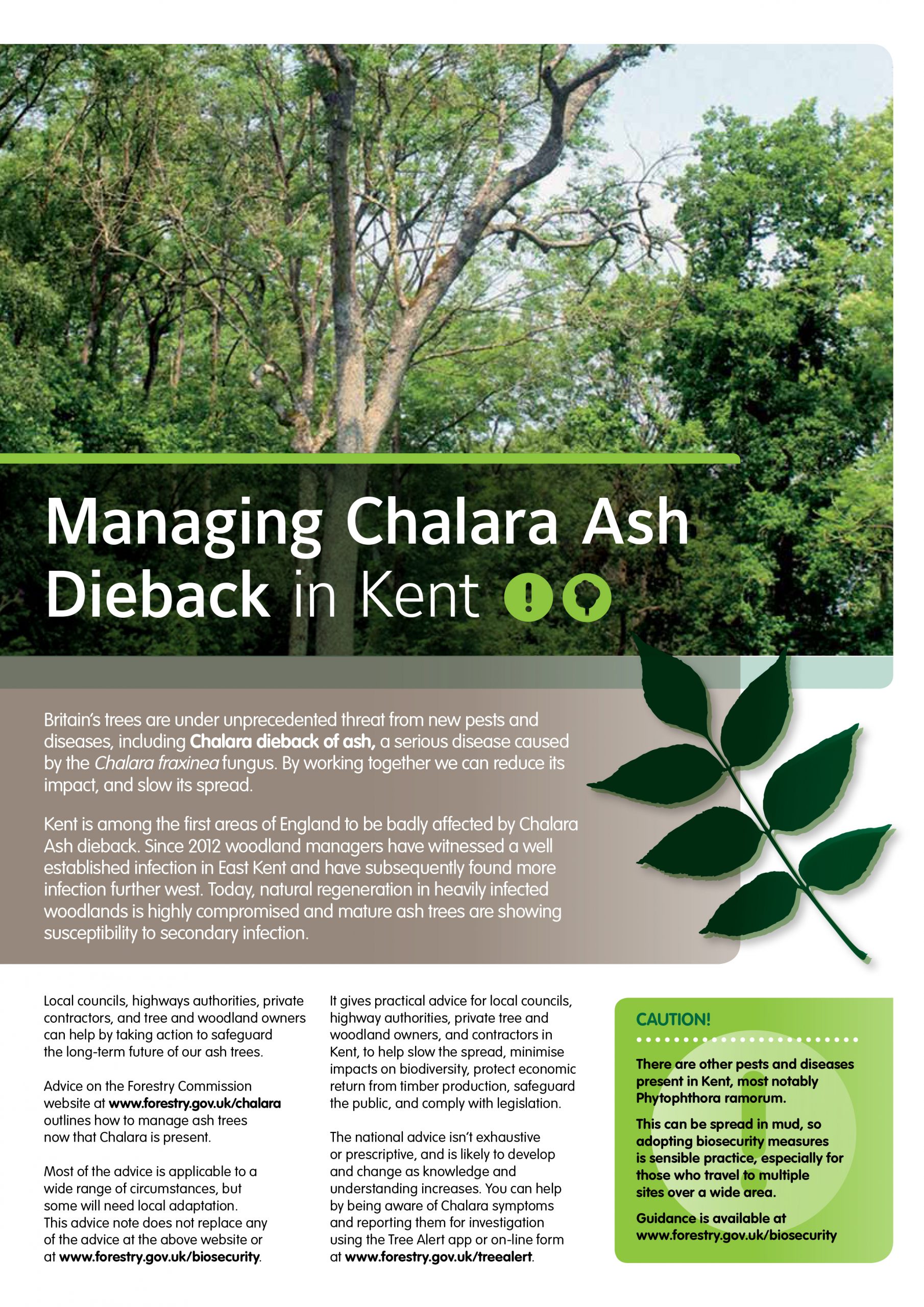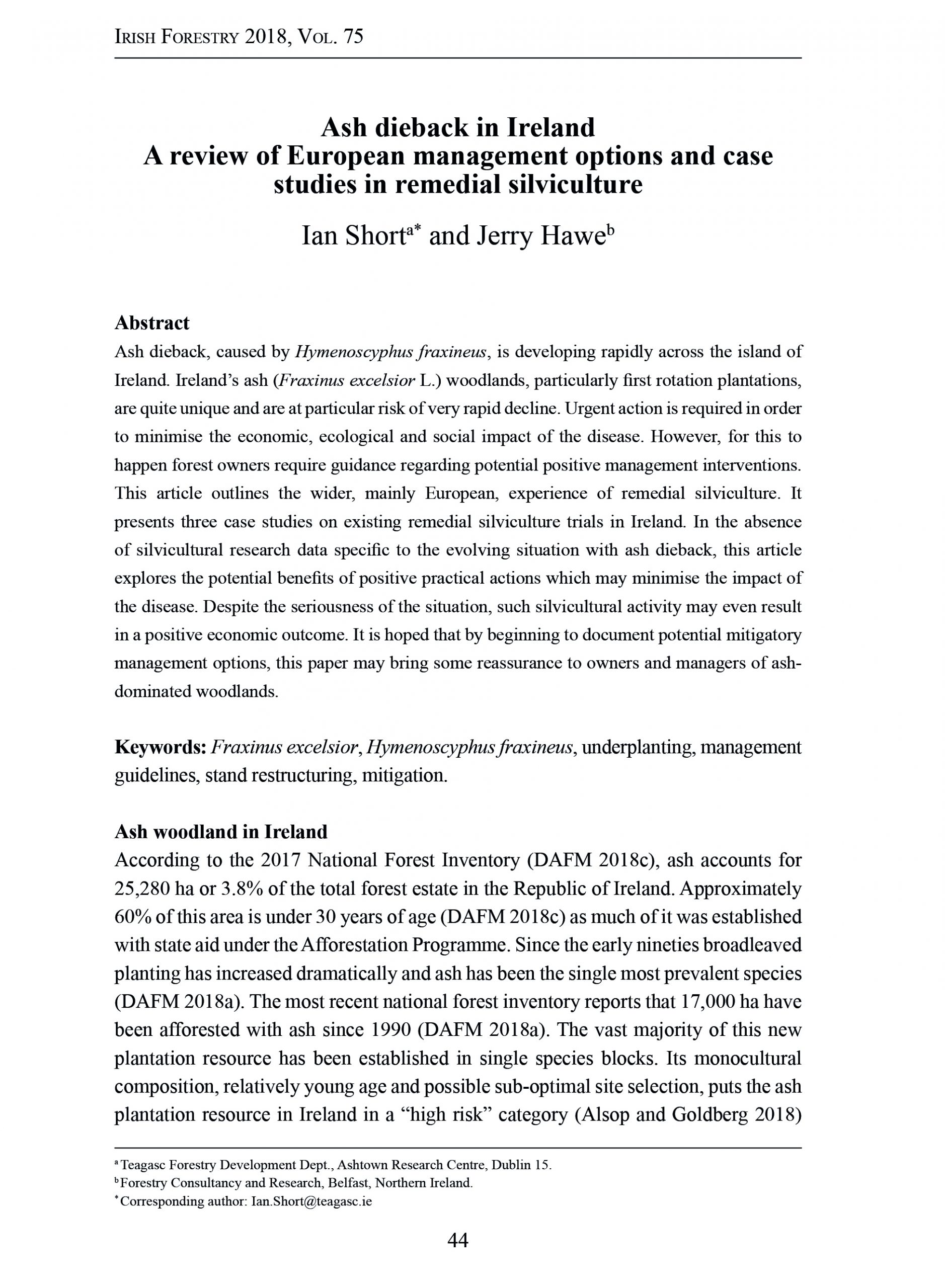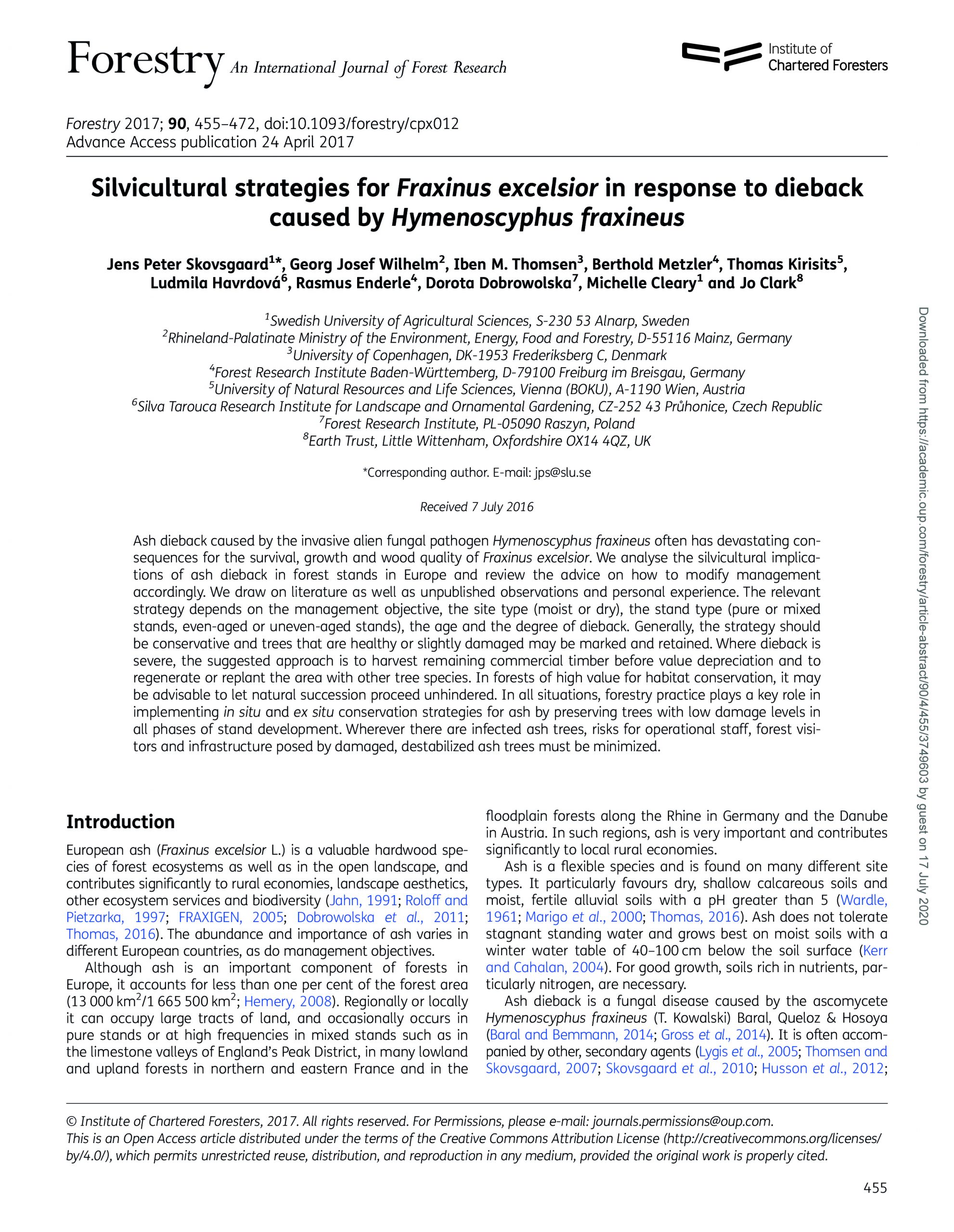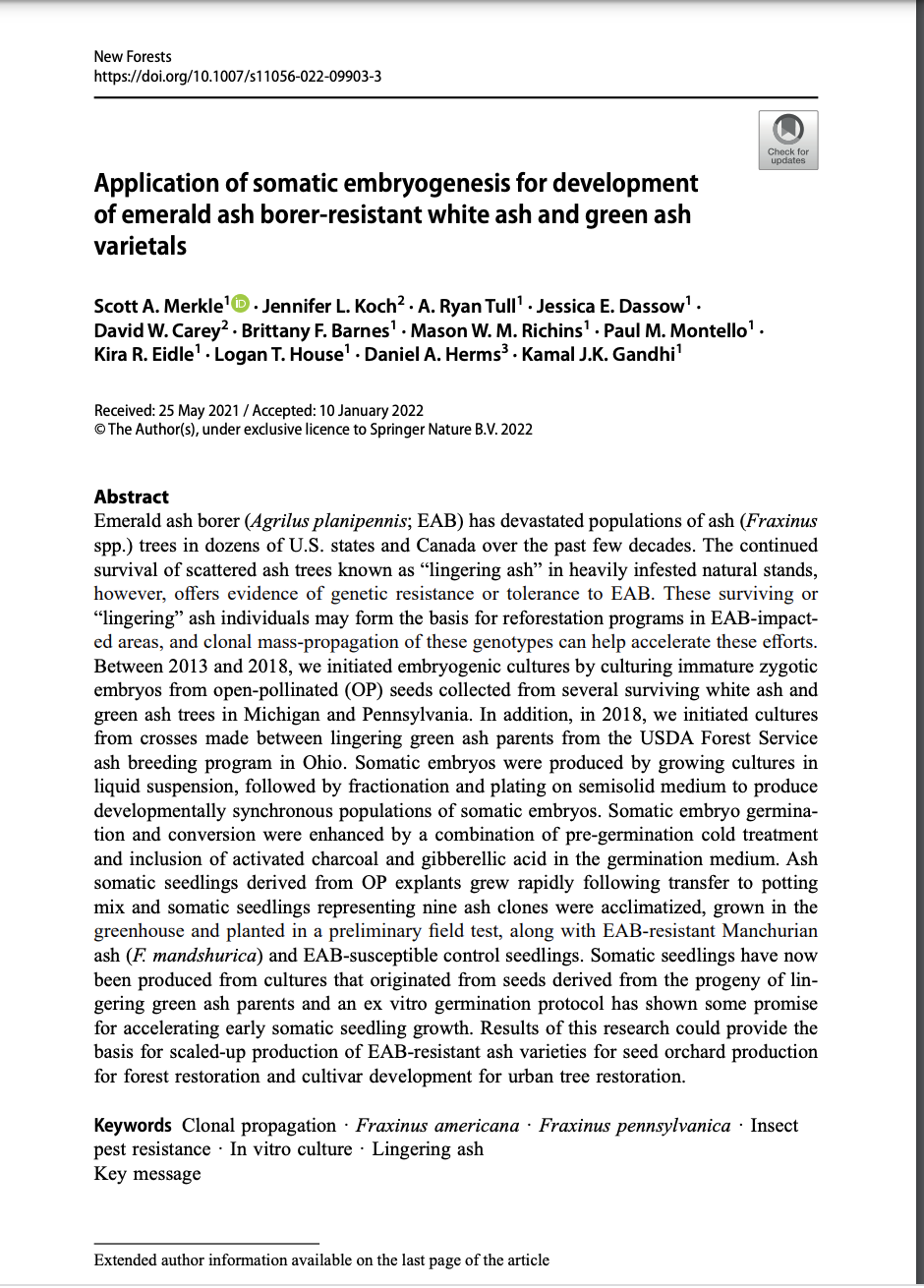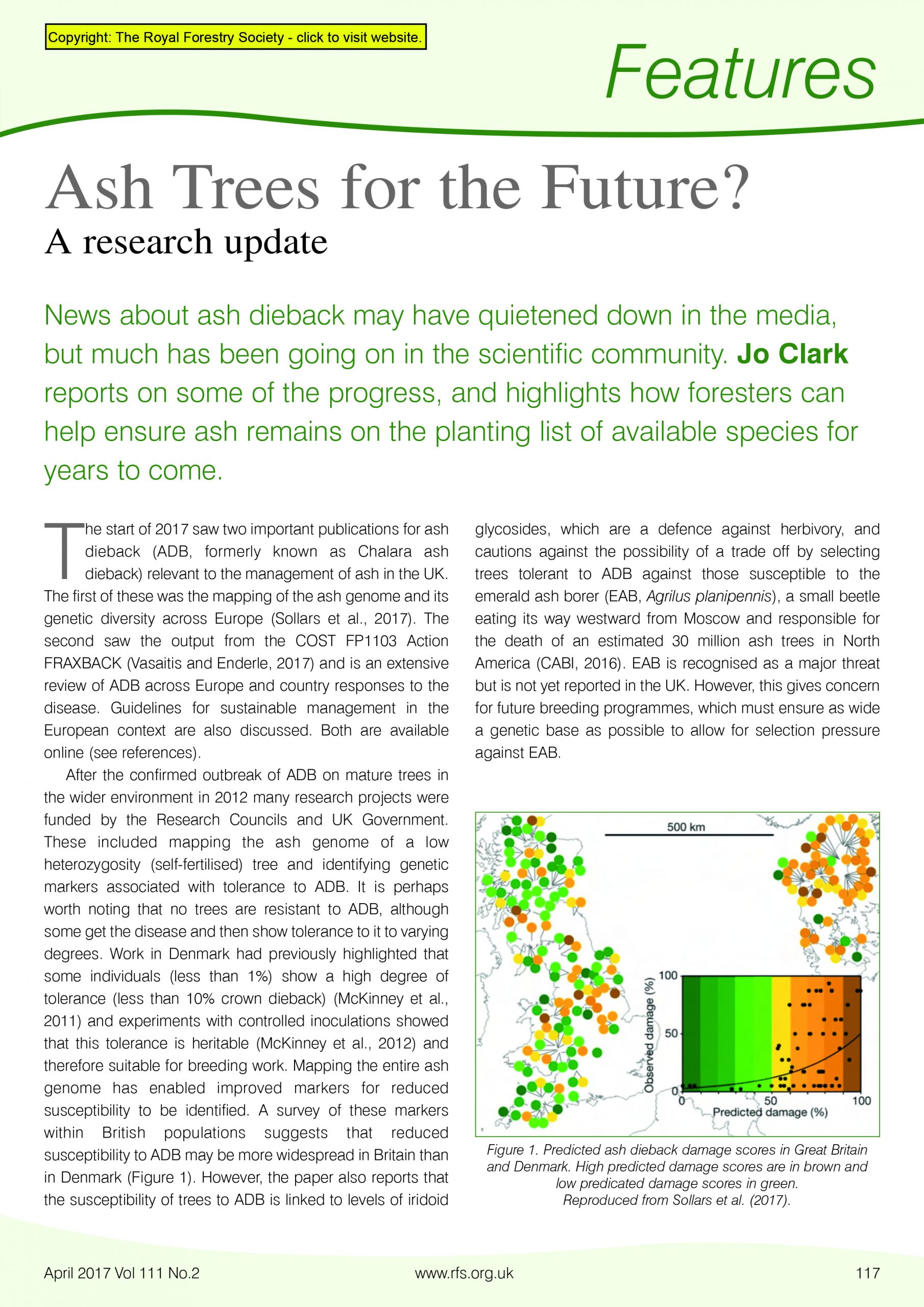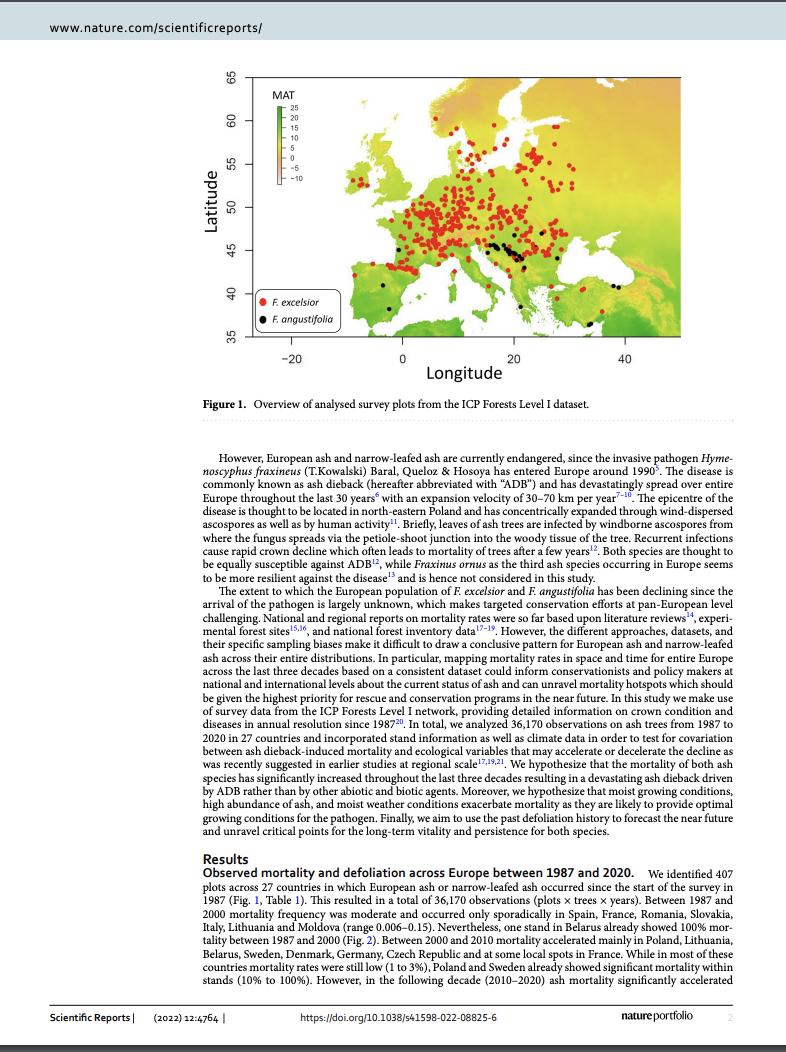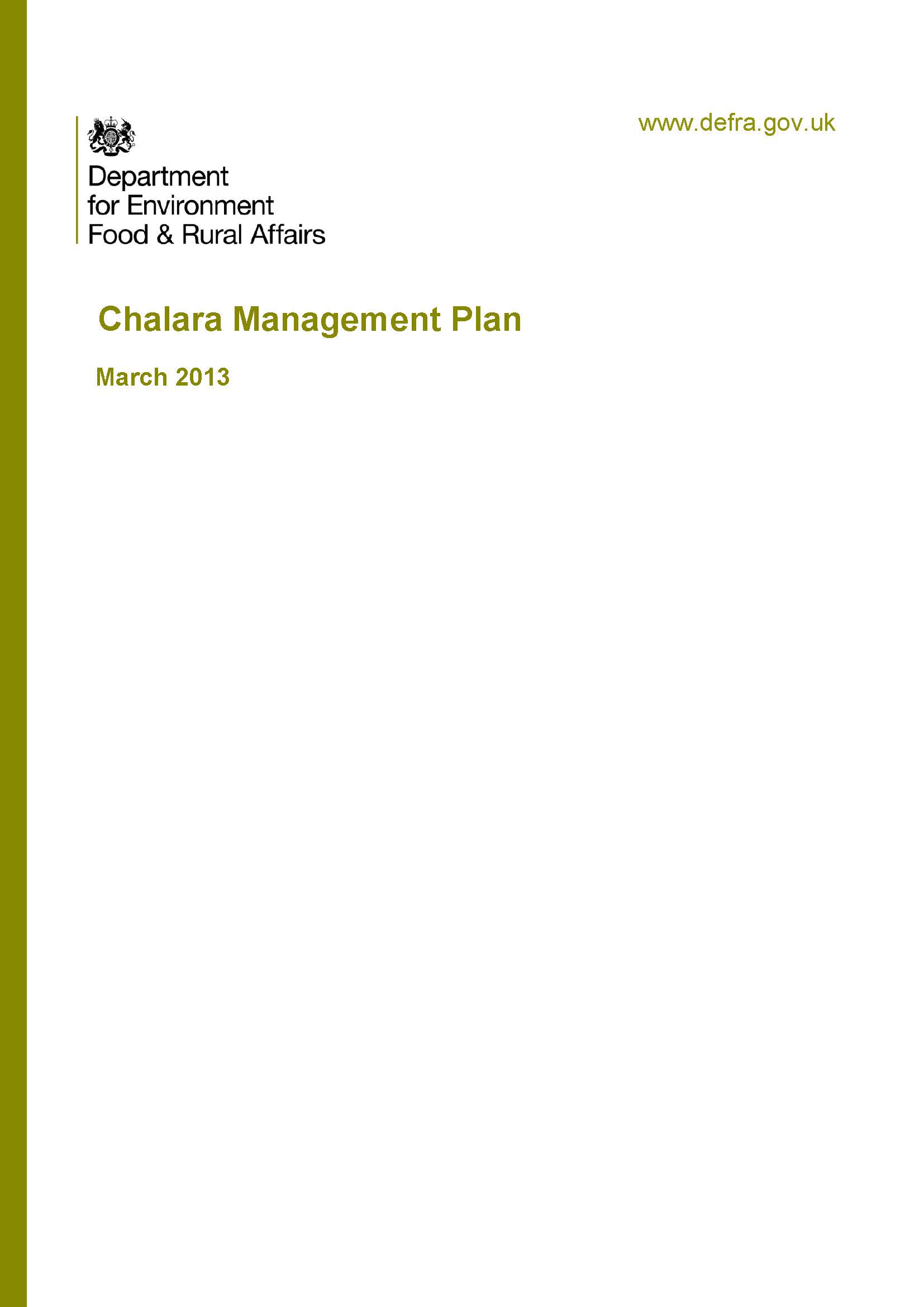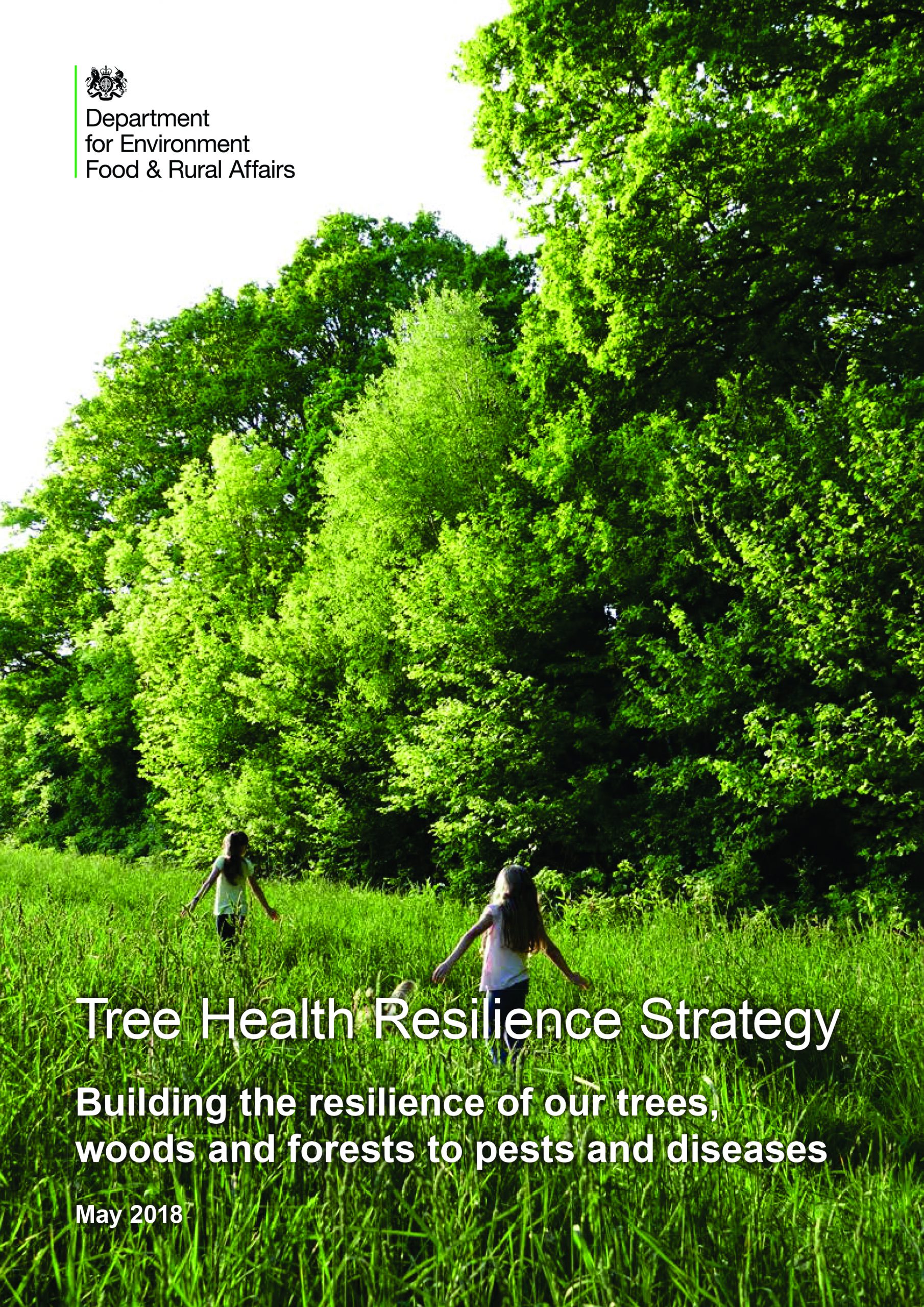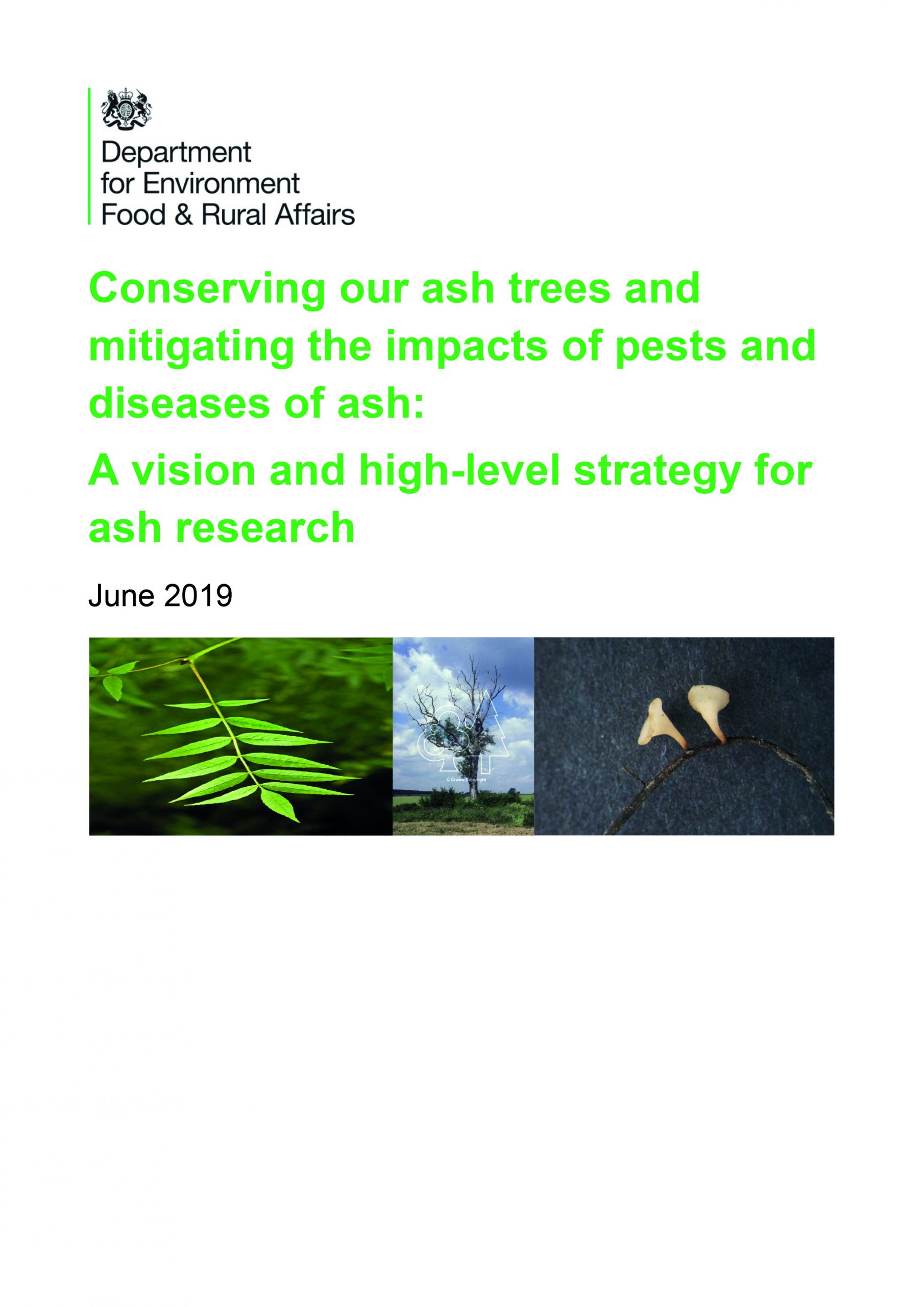Broome and Mitchell (2017)
Ecological impacts of ash dieback and mitigation methods
This Research Note from Forest Research summarises recent research on the ecological value of ash, on tree and shrub species as alternatives to ash, and on the interpretation of this information for woodland management.
The authors quantify the impact of ash dieback on tree mortality across Europe and use this data to develop a long-term predictive model.
By analysis tree ring structures, this study looks at the progression of collar necroses on infected ash trees in south-western Germany.
The National Forest Inventory provides a record of the size and distribution of forests and woodlands in Great Britain. This report is particularly focussed on the quantities of ash in the context of all broadleaved species.
JNCC (2014)
The potential ecological impact of ash dieback
A thorough and detailed report on the impact to British biodiversity of the loss of ash trees due to ash dieback.
Gross et al (2014)
Hymenoscyphus pseudoalbidus, the causal agent of European ash dieback
A comprehensive review on the current understanding of the causative fungus of ash dieback that highlights knowledge gaps and research needs.
Managing Ash Dieback Case Studies
Managing ash dieback: Case Studies – Volume 2 Royal Forestry Society in partnership with Forestry Commission
Broome et al (2014)
Ash dieback and loss of biodiversity – Can management make broadleaved woodlands more resilient?
This report evaluates the practical measures that might be taken to maintain biodiversity if significant numbers of ash trees are lost from British woodlands.
Hill et al (2019)
The £15 billion cost of ash dieback in Britain
The authors look at felling, replanting and loss of ecosystem services to estimate the economic burden of ash dieback.
Kent County Council
Managing Chalara Ash Dieback in Kent
South-eastern England was among the first areas to be badly affected by ash dieback. This report contains advice and information for local woodland owners.
Short and Hawe (2018)
Ash dieback in Ireland
This article outlines the wider experience of remedial silviculture and presents three case studies on silviculture trials in Ireland.
Skovsgaard et al (2017)
Silvicultural strategies for Fraxinus excelsior in response to dieback caused by Hymenoscyphus fraxineus
The authors draw on literature, unpublished observations and personal experience to review current advice on managing sites with ash dieback.
Scott A. Merkle1 · Jennifer L. Koch2 · A. Ryan Tull1 · Jessica E. Dassow1 · David W. Carey2 · Brittany F. Barnes1 · Mason W. M. Richins1 · Paul M. Montello1 · Kira R. Eidle1 · Logan T. House1 · Daniel A. Herms3 · Kamal J.K. Gandhi1
Clark (2017)
Ash Trees for the Future?
A research update on efforts to find individual ash trees with tolerance to ash dieback, including the Living Ash Project.
Clark and Webber (2017)
The ash resource and the response to ash dieback in Great Britain
A summary of the resource of ash trees in Britain and the new research efforts to understand and mitigate ash dieback.
Plumb et al (2020)
The viability of a breeding programme for ash in the British Isles in the face of ash dieback
The authors review the feasibility of a breeding programme to develop ash resistant to ash dieback in Britain.
DEFRA (2013)
Chalara Management Plan
The management plan provides an update on how Government have responded to ash dieback and sets out new action that will be taken.
DEFRA (2018)
Tree Health Resilience Strategy
With the vision: “To build the resilience of England’s trees, woods and forests. To enhance the benefits trees provide, by mitigating and minimising the impact of pests and diseases and improving the capacity of our trees to adapt to changing pressures.”
DEFRA (2019)
Ash tree research strategy
A vision and high-level strategy for ash research in the face of ash dieback and emerald ash borer.
The Tree Council (2015)
Chalara in Non‐Woodland Situations: Findings from a 2014 Study
A study to investigate non‐woodland ash numbers and the potential impacts that may occur as a result of the spread of ash dieback.

